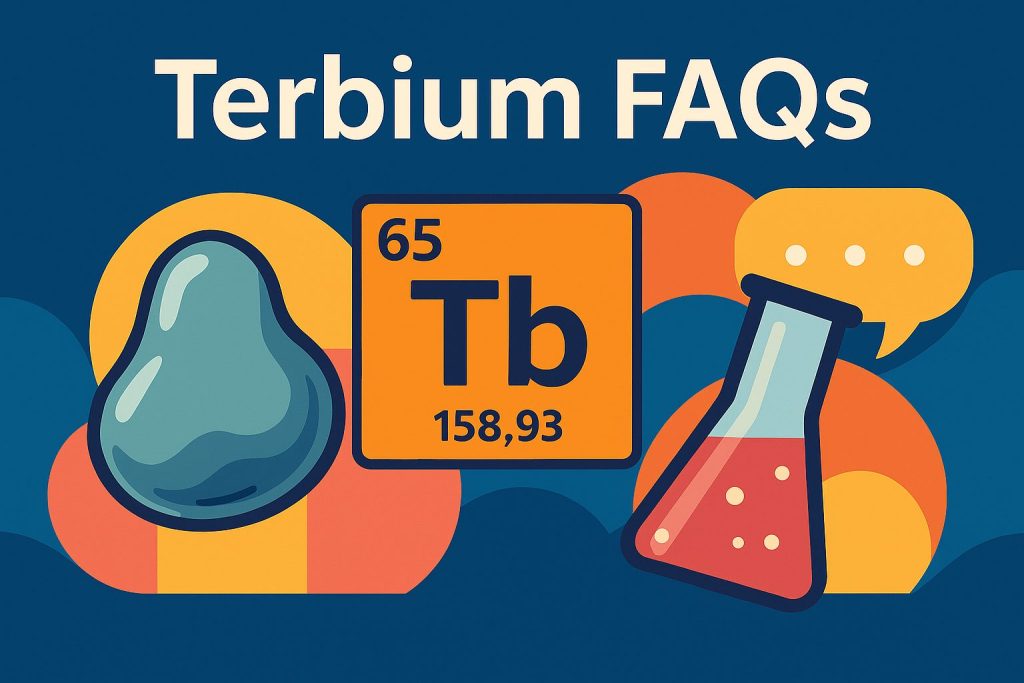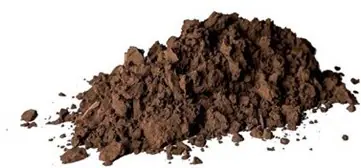The Rare Earth That Strengthens Magnets—and Supply Chains

Terbium isn’t a metal you’ll find lying around in nature. It doesn’t glitter like gold or trade on public markets. But behind the scenes, it’s a quiet heavyweight: essential in green tech, prized in defense systems, and notoriously tricky to source. Whether it’s making your phone vibrate, helping electric cars go further, or stabilising fuel cells, terbium is one of the rare earths quietly powering the 21st century.
In this guide, we break down everything you need to know about terbium: from its origins and applications to how you can add it to your portfolio as a tangible, high-potential investment.
🔬 Properties & Physical Behavior
Yes, terbium is a metal, specifically a rare earth element from the lanthanide series. In its pure metallic state, terbium is soft, silvery-gray, and can be cut with a knife. Despite being a metal, it’s highly reactive and is typically stored in a sealed container to prevent oxidation.
In its metallic form, terbium is a soft, silver-gray metal with a slight sheen. However, most of the terbium used in industrial applications, and the form we offer to investors, is terbium oxide, which appears as a dark brown powder. This oxide form is stable, easy to store, and the standard across global industry.
Terbium has a melting point of 1,356°C (2,473°F). It’s one of the reasons terbium is so valuable in high-temperature applications, like fuel cells, lasers, and permanent magnets that must function under extreme thermal stress. Unlike metals that buckle under pressure, terbium keeps its cool.
📖 History & Discovery
Terbium was first identified in 1843.
Carl Gustaf Mosander, a pioneer in the field of rare earth chemistry, is credited with discovering terbium, alongside two other elements (yttrium and erbium) from the same source material.
Terbium was discovered through the fractional crystallisation of rare earth oxides. Mosander found that what was once thought to be a single element (yttria) was actually a mixture of several new elements, one of which he named terbium.
Terbium takes its name from the Swedish village of Ytterby, a legendary site in the periodic table. No fewer than four elements—yttrium, terbium, erbium, and ytterbium—were named in its honor.
Terbium is element number 65, symbol Tb, and sits within the lanthanide series; the group of elements known for their magnetic, optical, and electronic properties.
🌍 Origin & Production
Terbium isn’t found freely in nature. Instead, it’s extracted as a by-product from rare earth ores such as monazite and bastnäsite. The process involves ion-exchange and solvent extraction techniques, which are labor- and cost-intensive due to the element’s chemical similarity to other lanthanides.
Terbium is separated from other rare earths using complex chemical processes, typically involving hydrochloric acid and multiple stages of solvent separation. Its extraction is both technically challenging and heavily reliant on countries like China, which dominate the supply chain.
In nature, terbium is found mixed with other rare earth elements in rare earth mineral deposits. For investors or industrial users, it is typically available in oxide form through specialised dealers, such as Strategic Metals Invest.
Terbium is mined as part of rare earth mineral deposits, most commonly from ores like bastnäsite and monazite. Major mining locations include:
China – Especially in Inner Mongolia and Sichuan province
Australia – At the Mount Weld mine operated by Lynas Rare Earths
USA – At the Mountain Pass mine in California (rare earths are extracted, but refining capacity is limited)
Myanmar – A growing but volatile source of heavy rare earths
These ores don’t contain terbium in isolation; instead, it’s extracted in tiny quantities alongside a complex mix of other lanthanides.
While mining can occur in several countries, production (meaning the chemical separation, purification, and refinement into usable terbium oxide) is overwhelmingly concentrated in China.
China refines over 90% of the world’s terbium supply. This stark concentration makes terbium one of the most geopolitically sensitive metals in the rare earth category, making it both strategically important and investment-worthy.
The United States has an estimated 1.4 million metric tons of rare earth reserves, but when it comes to terbium specifically, the numbers are much smaller and more elusive. While the U.S. may have trace amounts of terbium in its natural resources, it currently has no meaningful domestic production, making it highly dependent on foreign supply and vulnerable to export controls or geopolitical shifts. Virtually all of the terbium used in U.S. industry is imported, with China being the dominant supplier. Therefore, terbium is on the U.S. critical minerals list.
⚙️ Uses & Applications
Terbium plays a starring role in green technology and electronics. Its main uses include:
Enhancing high-performance magnets (especially NdFeB magnets), fluorescent lighting and LCD displays, laser systems and optical isolators, and stabilising fuel cells
In smartphones, terbium contributes to the vivid display colors via its role in phosphors for screens and lighting. It’s also indirectly used in the miniaturisation of magnetic components that power speakers, vibration units, and sensors.
Terbium is a critical enabler of technologies that underpin clean energy, modern electronics, and defense systems. Without it, permanent magnets would underperform, and advanced lighting and display systems would suffer in efficiency and color accuracy.
Terbium’s price is high for several compelling reasons. First, it has a low natural abundance and requires complex chemical extraction, as it rarely occurs in concentrated or easily separable form. Adding to this is the single-source supply risk: over 90% of the world’s terbium is refined in China, meaning any export restrictions or geopolitical tensions can cause sharp price fluctuations. Demand remains strong due to its critical role in high-tech and defense applications, especially in magnets, lasers, and fuel cells. Compounding the issue is a lack of effective recycling infrastructure, which means most terbium must still be sourced from primary mining, an expensive and environmentally sensitive process.
🧪 Safety & Handling
Terbium is generally not considered highly dangerous when handled properly, especially in its oxide form, which is the standard used in industry and for investment. It’s not radioactive, and it doesn’t pose an immediate health hazard through casual contact.
💼 Buying, Investing & Storage
You won’t find investment-grade terbium on eBay or Amazon. If you want certified, high-purity terbium oxide suitable for resale to industry, work with a specialised dealer. We offer terbium in sealed, certified packaging, stored securely in Frankfurt or available for delivery.
Investing in terbium means physically owning it as a strategic asset. You can purchase it outright, add it to a diversified basket of rare earths, or opt for secure vault storage in a tax-free, insured facility.
The most secure method is to store your terbium in a dedicated high-security vault, such as our partner facility METLOCK in Frankfurt. There, your metals are fully insured, professionally packaged, and easily liquidated if needed. Home storage is possible but not recommended for strategic holdings.
From wind turbines to smartphones, terbium is already shaping the world around us. However, with global supply concentrated in the hands of just a few, and demand rising rapidly, it’s also becoming a valuable strategic asset for forward-thinking investors. If you’re looking to diversify with a physical, high-demand metal and want to own something the tech world can’t live without, contact us for more information.


